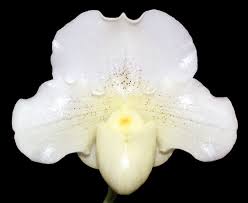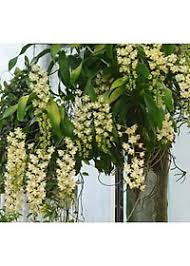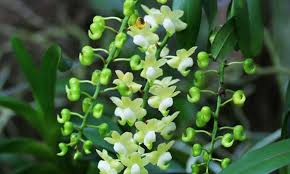
## Table of Contents
1. **Introduction**
2. **Understanding White Egg Orchids**
– 2.1 Characteristics of White Egg Orchids
– 2.2 Color Variations in Orchids
3. **Factors Influencing Orchid Color**
– 3.1 Genetics and Hybridization
– 3.2 Environmental Conditions
– 3.3 Nutrient Management
4. **Care Techniques for Altering Color**
– 4.1 Light Management
– 4.2 Watering Practices
– 4.3 Fertilization Techniques
– 4.4 Temperature Control
– 4.5 Pruning and Repotting
5. **Advanced Techniques for Color Enhancement**
– 5.1 Dyes and Colorants
– 5.2 Grafting and Propagation
– 5.3 Specialized Lighting
6. **Monitoring and Maintaining Orchid Health**
– 6.1 Recognizing Signs of Stress
– 6.2 Adjusting Care Based on Color Changes
7. **Conclusion**
8. **FAQs**
—
## 1. Introduction
Orchids, particularly White Egg Orchids (Phalaenopsis amabilis), are admired for their beauty and elegance. While their pristine white flowers are stunning in their own right, many orchid enthusiasts desire to explore color variations to create a unique aesthetic in their collections. This comprehensive guide discusses various care techniques that can influence the color of White Egg Orchids, helping you achieve the vibrant hues you desire.
## 2. Understanding White Egg Orchids
### 2.1 Characteristics of White Egg Orchids
White Egg Orchids are known for their striking white blooms, characterized by broad, waxy petals that can last several weeks. They thrive in tropical climates and are popular among both novice and experienced growers due to their relatively easy care requirements.
### 2.2 Color Variations in Orchids
Orchids can exhibit a stunning range of colors, including pinks, purples, yellows, and even blues. The color of an orchid flower is determined by various factors, including genetics, environmental conditions, and care techniques. Understanding these aspects is crucial for anyone looking to alter the color of their White Egg Orchids.
## 3. Factors Influencing Orchid Color
### 3.1 Genetics and Hybridization
The primary factor influencing the color of orchids is their genetic makeup. Hybridization plays a significant role in producing new colors and patterns. White Egg Orchids can be crossbred with other colored varieties to create hybrids that express different color traits. However, achieving specific color changes through genetic means can take time and requires careful planning and knowledge of orchid genetics.
### 3.2 Environmental Conditions
Environmental factors, such as light, temperature, and humidity, can significantly affect orchid color. For instance, increased light intensity can enhance pigmentation in orchid flowers, resulting in deeper or more vibrant colors. Conversely, poor lighting may lead to washed-out or pale blooms.
### 3.3 Nutrient Management
Nutrient availability, particularly certain elements, can also influence flower color. For example, higher levels of phosphorus and potassium may enhance flower pigmentation. On the other hand, a deficiency in nutrients can result in pale or underdeveloped flowers.
## 4. Care Techniques for Altering Color
### 4.1 Light Management
Light is one of the most critical factors influencing flower color in orchids. White Egg Orchids typically require bright, indirect light to thrive. Here’s how to manage light effectively:
– **Optimal Light Levels:** Provide your orchids with 12-14 hours of bright, indirect sunlight daily. A south or east-facing window is ideal.
– **Use of Sheer Curtains:** If the light is too intense, use sheer curtains to diffuse it, preventing leaf burn while still allowing sufficient light for growth.
– **Supplemental Lighting:** During darker months, consider using grow lights to ensure your orchids receive adequate light. Use full-spectrum fluorescent or LED lights to enhance color development.
### 4.2 Watering Practices
Proper watering is essential for maintaining orchid health and can indirectly influence flower color. Here’s how to optimize your watering techniques:
– **Watering Frequency:** Water when the top inch of the growing medium feels dry. This frequency can vary based on humidity and temperature.
– **Use Room Temperature Water:** Cold water can shock the plant. Use room temperature water to keep the roots healthy.
– **Consider Water Quality:** The quality of water (e.g., pH and mineral content) can impact orchid growth. Use distilled or rainwater to avoid harmful chemicals found in tap water.
### 4.3 Fertilization Techniques
Fertilization is a vital aspect of orchid care and can play a significant role in flower color. Here’s how to effectively fertilize your White Egg Orchids:
– **Choose the Right Fertilizer:** Use a balanced fertilizer with a ratio of 30-10-10 (N-P-K) during the growing season. The higher potassium content helps enhance flower color.
– **Fertilize Regularly:** Apply fertilizer every 2-4 weeks during the active growth phase (spring and summer). Reduce feeding during the dormant phase (fall and winter).
– **Dilute Fertilizer:** Always dilute the fertilizer to half-strength to avoid burning the roots, which can adversely affect flower color.
### 4.4 Temperature Control
Temperature fluctuations can impact flower color development. White Egg Orchids prefer temperatures between 70°F and 85°F (21°C to 29°C) during the day and slightly cooler temperatures at night.
– **Day/Night Temperature Variation:** Providing a temperature drop of 10°F (5°C) at night can encourage blooming and enhance color.
– **Avoid Sudden Changes:** Keep your orchids away from drafts, heating vents, and air conditioning units to prevent stress from temperature fluctuations.
### 4.5 Pruning and Repotting
Pruning and repotting can also influence the color and health of your orchids.
– **Regular Pruning:** Remove spent flowers and any dead or yellowing leaves to encourage new growth and maintain plant vigor.
– **Repotting:** Repot your orchids every 1-2 years to refresh the growing medium and provide more room for root growth. This practice helps keep the plant healthy and can influence flower color.
## 5. Advanced Techniques for Color Enhancement
### 5.1 Dyes and Colorants
While not traditional, some growers use plant-safe dyes to alter flower color temporarily. This method can produce vibrant hues but may require experimentation to achieve the desired results.
– **Choose Safe Dyes:** Ensure any dye used is safe for plants. Food coloring diluted in water can be a suitable option.
– **Application:** Drench the roots in the dye solution, allowing the plant to absorb the color. This method may not yield permanent results but can be a fun way to experiment.
### 5.2 Grafting and Propagation
Grafting and propagation techniques can lead to new color variations by combining different orchid types.
– **Grafting:** This advanced technique involves joining two plant sections together to encourage new growth. Successful grafting can lead to unique flower colors and patterns.
– **Propagation:** Propagating from seeds or tissue cultures allows you to explore genetic variations that may produce different flower colors.
### 5.3 Specialized Lighting
Using specialized lighting can enhance flower color and stimulate growth.
– **Use Colored Filters:** Placing colored filters over grow lights can emphasize certain wavelengths that promote pigment production.
– **Adjust Light Spectrum:** Different light spectrums can influence plant growth and flower color. Experimenting with light types can lead to exciting results.
## 6. Monitoring and Maintaining Orchid Health
### 6.1 Recognizing Signs of Stress
It’s essential to monitor your orchids for signs of stress, which can affect their color and overall health.
– **Leaf Color Changes:** Yellowing or browning leaves may indicate overwatering or nutrient deficiencies.
– **Reduced Flowering:** If blooms are fewer or less vibrant than usual, reevaluate your care routine.
### 6.2 Adjusting Care Based on Color Changes
As you implement color-changing techniques, be prepared to adjust your care practices based on the results.
– **Track Changes:** Keep a journal of care practices and flower colors to identify what works best for your orchids.
– **Be Patient:** Color changes may take time, so allow for an adjustment period before making further changes.
## 7. Conclusion
Changing the color of White Egg Orchids is an intriguing endeavor that combines art, science, and horticultural skills. By understanding the factors that influence color and implementing various care techniques, you can enhance the beauty of your orchids and explore a range of stunning hues. Remember to be patient, as results may take time, but with dedication and care, your White Egg Orchids can transform into vibrant masterpieces.
## 8. FAQs
### 1. **Can I permanently change the color of my White Egg Orchids?**
– While you can influence color through care techniques, permanent color change is primarily determined by genetics. However, hybridization and selective breeding can yield new color varieties.
### 2. **Are there specific fertilizers for color enhancement?**
– Look for fertilizers with higher potassium levels (the third number in the N-P-K ratio) to promote flower color vibrancy.
### 3. **How long does it take to see color changes in orchids?**
– Changes in flower color may take several growth cycles to manifest, so be patient and continue to refine your care techniques.
### 4. **Is it safe to use dyes on orchids?**
– If using plant-safe dyes, it can be safe, but results may be temporary. Always conduct a patch test on a small area first.
### 5. **Can I combine different care techniques for better results?**
– Yes, combining light management, nutrient
management, and temperature control can create a favorable environment for color enhancement.
With these insights, you are now equipped to embark on your journey of changing the color of your White Egg Orchids. Enjoy the process, experiment with different techniques, and watch as your orchids flourish into colorful blooms!


